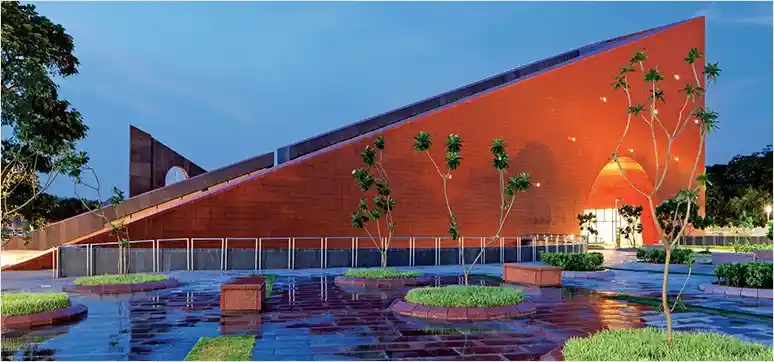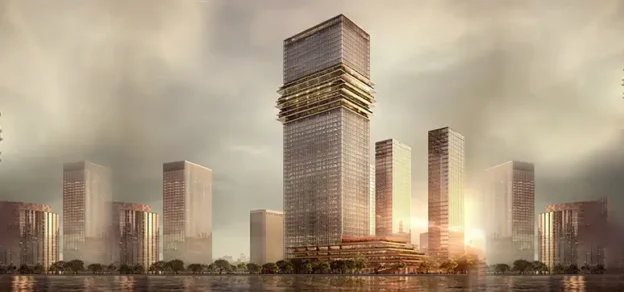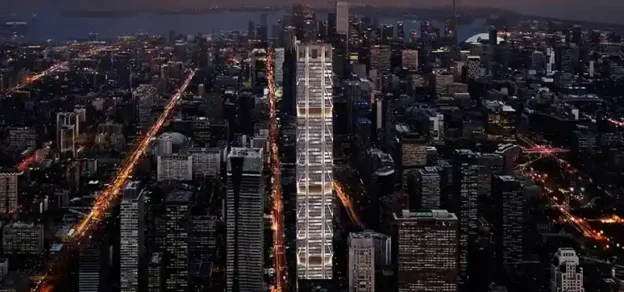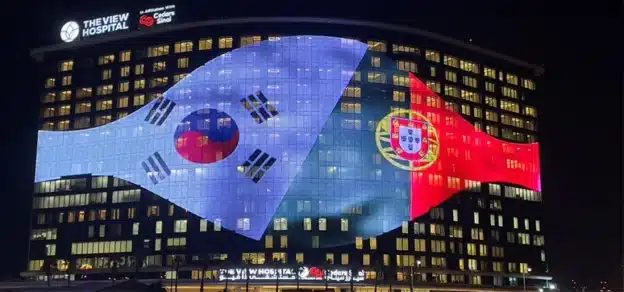Inserted as anchor points on one of the principal nodes of the city of Lucknow, the two institutions the Jayaprakash Narayan Interpretation Centre, also known as the Museum of Socialism, and the Jayaprakash Narayan International Convention Centre, take on the onus of becoming contemporary landmarks that inspire the development of the urban fabric around them. The museum’s architecture and experience design has not been envisioned to be mere repositories of frozen moments of the past, but designed with the intention of making it alive and active participant in the contemporary dynamics of the historic city of Lucknow.The external façade strives to achieve fitting, sensitive and gallant negotiations with the contrasting and oft conflicting contexts of urbanity and nature. The terracotta cladding responds to the integrity of a historic cityscape.
The blank walls of the simplified triangle are born out of the need for the museum’s introverted character, but belie the complexity of interlocking volumes and themes that make for the museum journey.
The monolithic and bold form of the building exudes empowerment. Just like the man it represents, the building with its clean and clear lines is deceptively simple, the profound depth and complexity revealed on the inside and it only reinforces the notion of simplicity being rooted in deep thought and reflection.

The austere expression of materials, subconsciously echoes the honest and unpretentious character of JP while the grand form makes a bold architectural impression that is absolutely imperative and intentional, meant to push people towards questioning fundamentals and towards brave expressions in the pursuit of change. Since the building is itself sculptural in nature, it seemed best to construct in concrete. However, its terracotta cladding throws light on its desire to cohabit- it’s warm, earthy and deep texture is very indigenous. This formal asceticism in the use of stark and simple material strives to imbue richness and nobility. The material choice conveys a certain timelessness and ease of maintenance, both elements much needed for a public space of this nature.
The presence of a ‘skin’ as opposed to a façade means that the building sports a layered outer covering. The custom-designed terracotta tiles are dry-clad with an air-gap between this layer and the true wall.
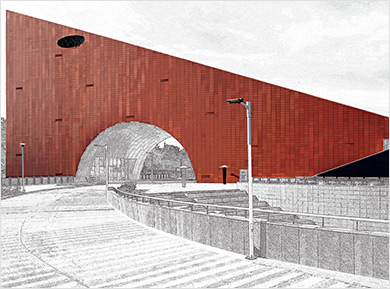
This space filled with rock wool offers a measurable degree of thermal and sound insulation. While the former keeps the much visited place cool and comfortable, the latter helps in cutting down the city cacophony, along with a host of other measures and enables the immersive museum experience to be smooth and undisrupted by noise. Further, the terracotta tiles being perforated, allow for air flow and ventilation. The use of this indigenous and earth-friendly material states the museum’s ecological positioning.
The triangular shape of the façade best diagrammatically represents the triad of objectives of socialism as conceived by JP- freedom, equality and brotherhood. Three of these words are celebrated and etched in multiple languages on the terracotta panels, bearing testimony to JP’s national outreach and following.
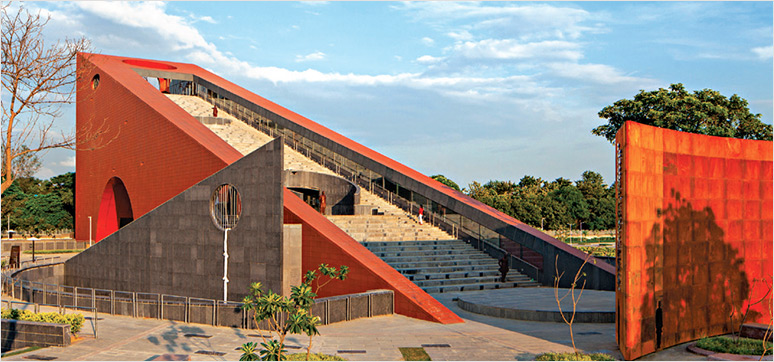
One of the façades is made of vertical bars- the voids in between them create the image of JP. This two dimensional sculpture is a face of freedom and is a combination of a real and illusionary installation.
Interestingly the triangular façade facing the convention centre, sports a viewing tunnel from which the monumental building is clearly viewed. This feature adds a dose of playfulness to the otherwise sombre building. The façade evokes curiosity about the life within, giving just that little hint of the narrative of the museum; this part of the façade is indeed a part of the journey through it. The ‘fronts’ are truly non-façades for they are not after thoughts dressings of the building, but conscious participants in the programme and reflective of the spirit inhabiting it.
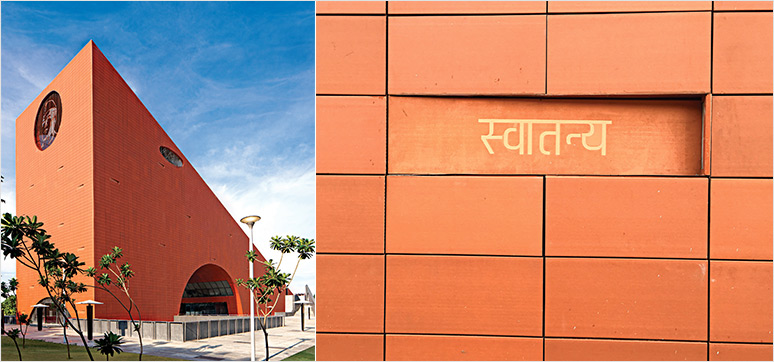
QUICK FACTS
Project: Jai Prakash Narayan International Centre(JPNIC)
Location: Lucknow
Client: Lucknow Development Authority
Architect: Sourabh Gupta
Materials used for façade: Terracotta Cladding
Commencement Date: 2013
Completion Date: 2016
Site Area: 18.6 acres (75,464 sq m)
Built-Up Area: 96125 sq m
